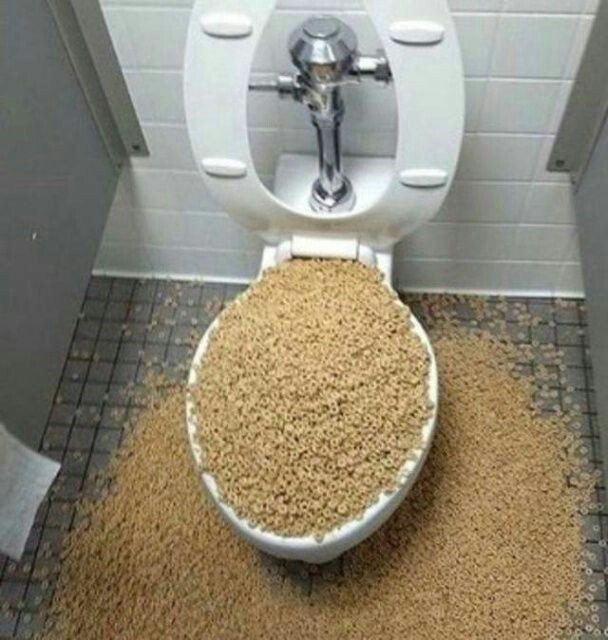Can You to Flush Food Down the Toilet?
Can You to Flush Food Down the Toilet?
Blog Article
We have noticed this article on Flushing Food Down the Toilet? below on the web and accepted it made sense to relate it with you on this site.

Intro
Lots of people are often faced with the predicament of what to do with food waste, specifically when it concerns leftovers or scraps. One common concern that emerges is whether it's fine to flush food down the commode. In this post, we'll delve into the reasons people may take into consideration flushing food, the effects of doing so, and different techniques for proper disposal.
Reasons that individuals may take into consideration flushing food
Absence of awareness
Some people might not recognize the prospective injury brought on by flushing food down the bathroom. They may incorrectly think that it's a safe practice.
Comfort
Purging food down the bathroom might look like a quick and easy service to getting rid of undesirable scraps, specifically when there's no neighboring trash can readily available.
Negligence
In some cases, individuals might just choose to flush food out of sheer negligence, without taking into consideration the repercussions of their actions.
Effects of flushing food down the toilet
Ecological effect
Food waste that ends up in waterways can add to contamination and damage aquatic ecosystems. Furthermore, the water used to flush food can strain water resources.
Plumbing issues
Purging food can bring about blocked pipelines and drains, creating expensive pipes repairs and hassles.
Sorts of food that need to not be flushed
Coarse foods
Foods with fibrous structures such as celery or corn husks can get entangled in pipelines and trigger blockages.
Starchy foods
Starchy foods like pasta and rice can absorb water and swell, bring about blockages in pipelines.
Oils and fats
Greasy foods like bacon or food preparation oils need to never be flushed down the bathroom as they can solidify and trigger clogs.
Proper disposal approaches for food waste
Utilizing a waste disposal unit
For homes equipped with garbage disposals, food scraps can be ground up and purged with the pipes system. However, not all foods appropriate for disposal in this fashion.
Recycling
Particular food packaging products can be recycled, reducing waste and lessening environmental influence.
Composting
Composting is an environment-friendly means to deal with food waste. Organic products can be composted and utilized to enhance soil for horticulture.
The importance of correct waste administration
Lowering environmental injury
Proper waste administration methods, such as composting and recycling, help reduce contamination and maintain natural resources for future generations.
Protecting plumbing systems
By staying clear of the practice of flushing food down the commode, home owners can protect against expensive pipes repair work and maintain the honesty of their plumbing systems.
Conclusion
Finally, while it might be alluring to purge food down the commode for convenience, it is very important to understand the potential effects of this action. By adopting correct waste management methods and disposing of food waste responsibly, individuals can contribute to much healthier pipes systems and a cleaner setting for all.
FLUSH FOOD DOWN THE TOILET?
FLUSHING FOOD CAN CAUSE BLOCKED DRAINS IN YOUR HOME
All of the plumbing fixtures in your home are connected to the same sewer pipe outside of your home. This outdoor sewer pipe is responsible for transporting all the wastewater from your home to the Council sewer mains. Even small pieces of food that go down the kitchen sink can cause problems for your sewer. It should therefore be obvious that flushing larger bits of food, such as meat, risks a clog in either the toilet itself or the sewer pipes. Flushing greasy food is even more problematic because oil coagulates when it cools, coating the interior lining of your pipes.
THE TOILET IS NOT A BIN
Food isn’t the only thing that people shouldn’t be flushing down the toilet. People use the toilet to dispose of all kinds of things such as tampons, makeup wipes, dental floss, kitty litter and even underwear. Water goes to great lengths to educate residents about the high costs and stress placed on wastewater treatment systems simply from people flushing the wrong stuff down the toilet. It costs taxpayers millions of dollars each year, and homeowners thousands in blocked drain repairs.
FLUSHING FOOD IS A WASTE OF WATER
Flushing food is a waste of our most precious resource - water. In June this year Level 1 water restrictions were introduced to protect water supply from drought conditions. Much of New South Wales continues to be affected by prolonged drought with recent figures revealing up to 97 per cent of the state remains in drought. Depending on whether you have a single or dual flush toilet, every single flush uses between five and 11 litres of water. In the current climate this is a huge amount of water to be wasting on flushing food that should be placed in the bin (or better yet, the compost).
https://www.jabplumbingsolutions.com.au/blog/can-you-flush-food-down-the-toilet

I'm just very taken with What Can Happen If You Flush Food Down the Toilet? and I am praying you enjoyed reading the entire page. Enjoyed our entry? Please share it. Help another person locate it. I cherish reading our article about Is it safe to flush food (especially rice) down the toilet?.
Schedule Today Report this page